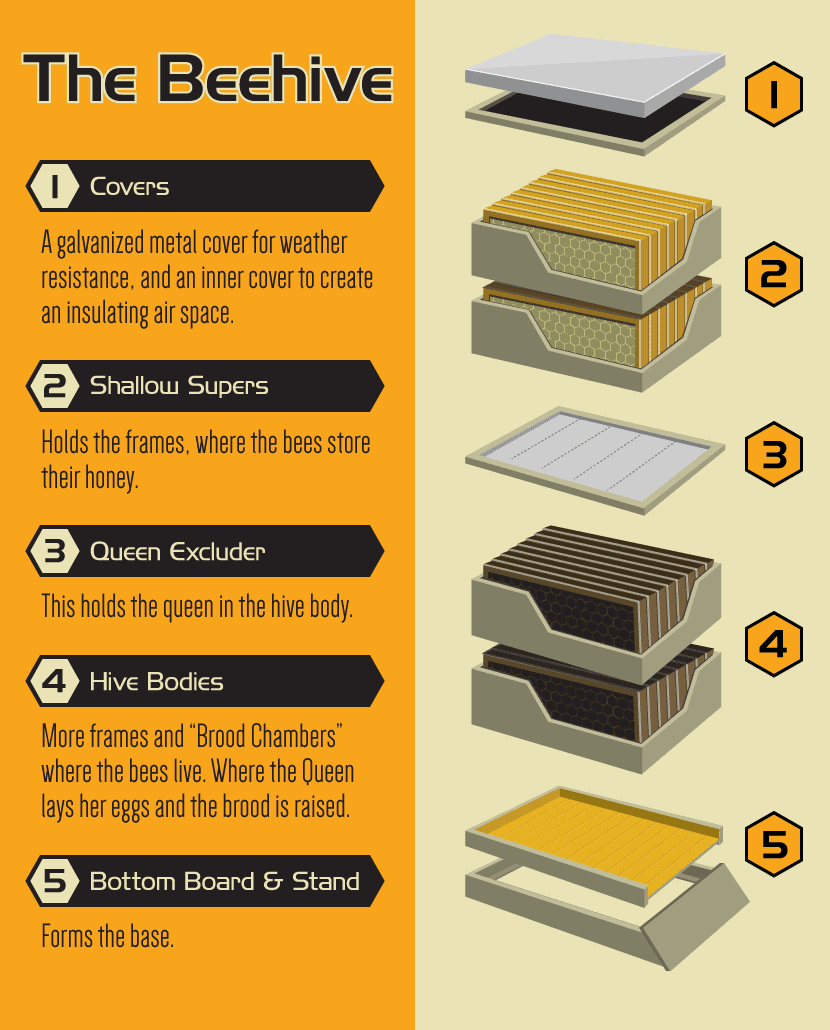If you’ve ever wondered exactly how a beehive works, you’re in the right place. This guide to beekeeping for beginners will provide an overview of how a beehive operates, from the individual bees and their roles, to the structure of the hive itself. We’ll discuss the different kinds of beehives, the roles of the worker and queen bees, and the essential components of a successful beehive. With this knowledge, you can make an informed decision on whether beekeeping is right for you.
Building a Beehive
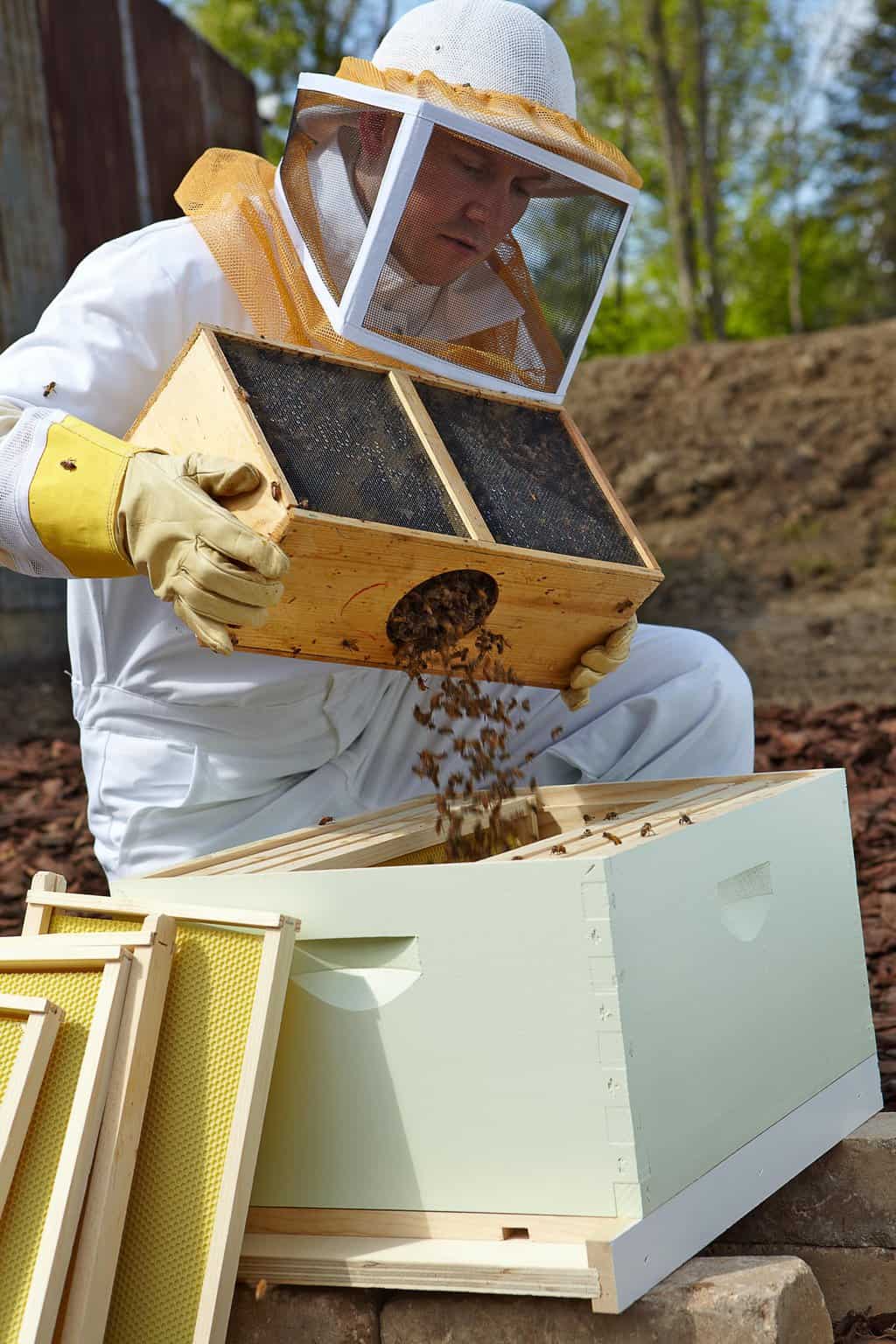
Materials Needed
For beekeeping beginners, building a beehive from scratch can be a daunting task. The necessary materials include a hive body, frames, foundation, bottom board, inner cover, outer cover, and a feeder. The hive body and frames are used to house the bees and store the honey, while the foundation is placed on the frames and provides a base for the bees to build their comb. The bottom board acts as a floor for the hive and the inner and outer covers protect the hive from the elements. Finally, the feeder is used to provide the bees with food and water.
Assembling the Beehive
Once you have all of the materials, you can begin assembling the beehive. Start by attaching the bottom board to the hive body. Next, insert the frames into the hive body, making sure they are spaced evenly. Place the foundation inside the frames and secure it with the provided nails. Add the inner cover, followed by the outer cover. Finally, attach the feeder to the outside of the hive. Now your beehive is ready for the bees!
When it comes to understanding how a beehive works, it is important to know the basics of beekeeping. With the right materials and a bit of patience, anyone can build a beehive and learn the basics of beekeeping.
Maintaining a Beehive
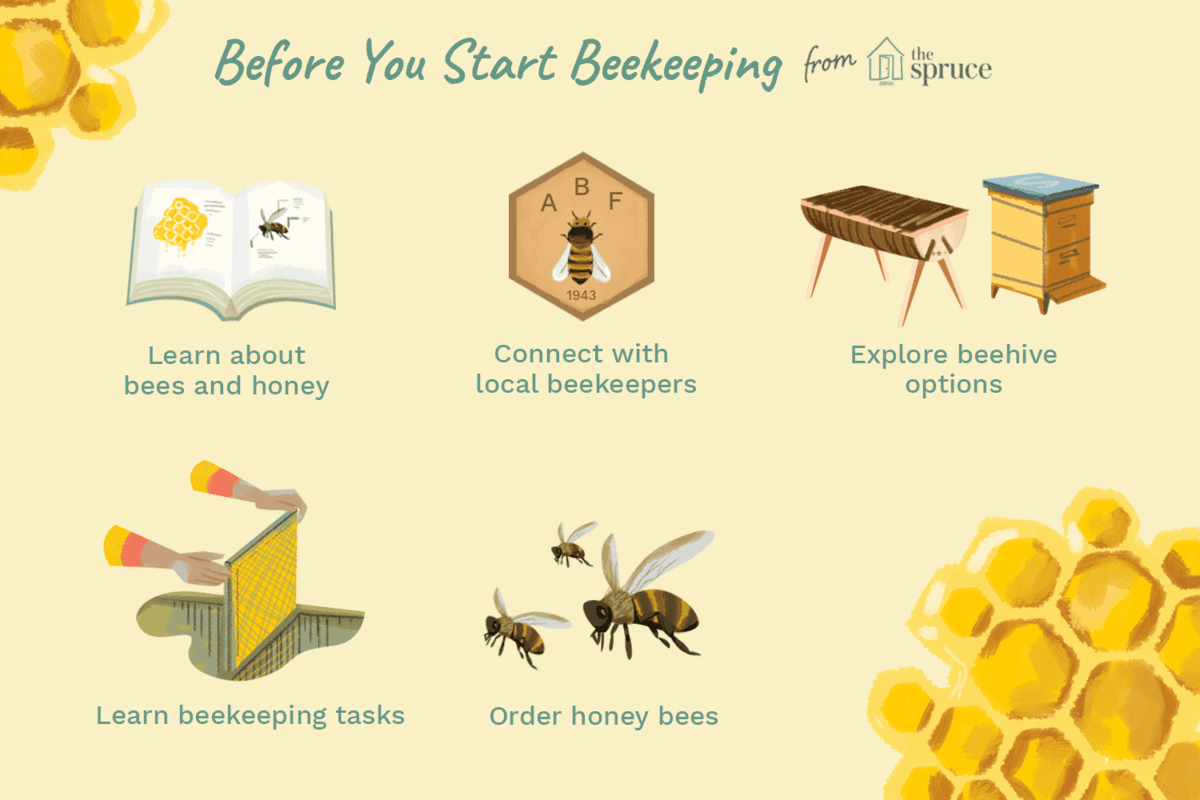
Beehives must be inspected regularly to ensure they are healthy and safe. The beekeeper should check for signs of disease, pests, and honey production.
Tips for Maintaining a Bee Hive
To successfully maintain a bee hive, the beekeeper should:
- Remove any dead bees around the hive in order to prevent the spread of disease.
- Check for pests and diseases such as mites or wax moth larvae which can damage the hive.
- Ensure the hive is well ventilated to prevent overheating.
- Provide adequate food and fresh water to ensure the bees are well nourished and healthy.
Feeding Your Bees
Bees need a continuous supply of food to survive and produce honey. Beekeepers should provide sugar syrup or pollen patties to supplement the bees’ natural diet. It is important to feed the bees in the spring and summer when the weather is warm and flowers are in bloom. The beekeeper should also check the hive for signs of honey production and harvest when necessary.
Collecting Honey
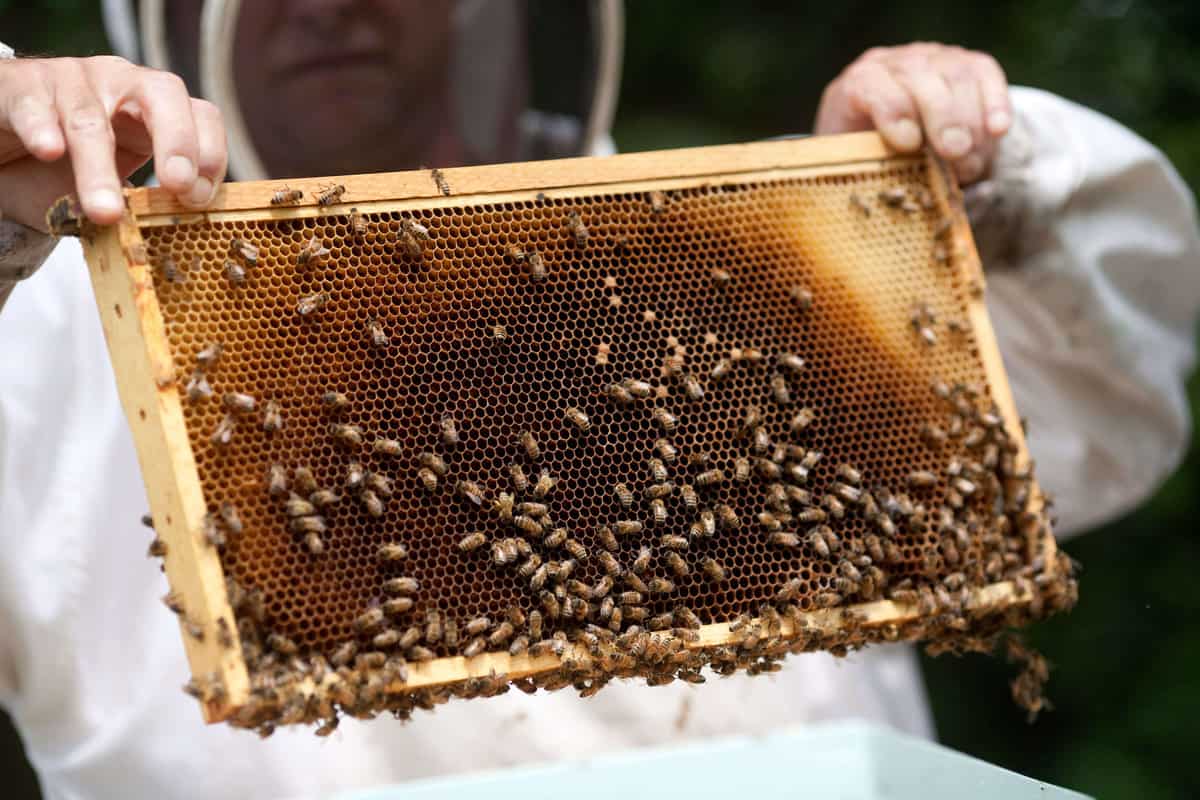
Preparing the Hive
Before beekeepers can collect honey, they must first set up a hive in a safe location. This means selecting an appropriate location, such as an area that is sheltered from the wind and that gets plenty of sunlight. The hive should also be placed far away from any sources of pollution, such as factories, highways, and other human-made sources of environmental stress. Beekeepers should also ensure that the hive is in an area with plenty of flowers and other sources of pollen and nectar.
Once the hive is set up, beekeepers must then provide their bees with the materials they need to build their hive. This includes placing a wooden frame inside the hive and adding wax foundations, which are thin sheets of beeswax that provide the bees with a base for constructing their honeycombs.
Collecting the Honey
Once the hive is ready, beekeepers can begin collecting honey. This is done by carefully removing the frames of honeycomb from the hive and placing them in an extractor. The extractor spins the frames at a high speed, which causes the honey to be forced out of the combs. The honey is then collected in a container and can be used for various purposes, such as making honey-based products or selling it to local beekeepers.
Beekeepers should take precaution when collecting honey, as the sudden removal of the frames can cause the bees to become agitated and sting. Therefore, beekeepers should always wear protective clothing when collecting honey from the hive.
Harvesting Beeswax
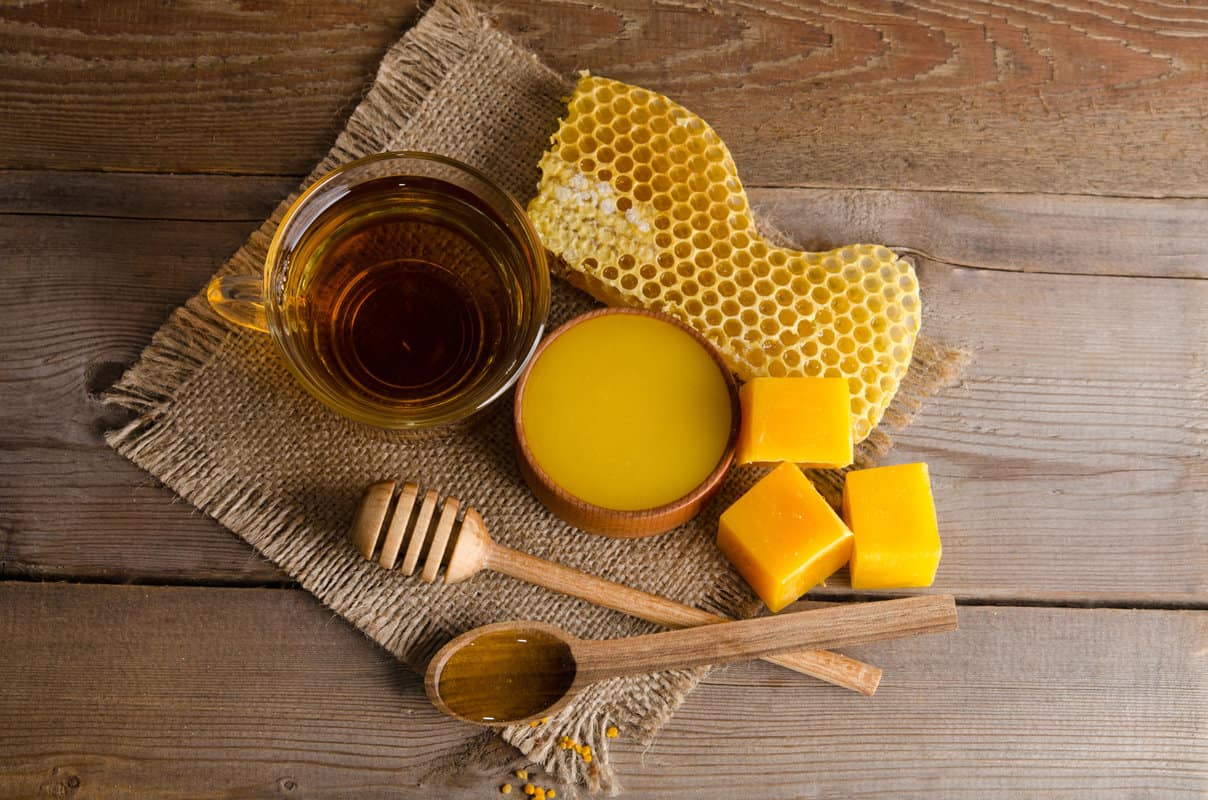
Preparing the Hive
Before harvesting beeswax, the hive needs to be properly prepared. This includes removing the frames from the hive and making sure there are no bees present. The frames should then be scraped of beeswax with a heated knife or scraper. The beeswax should be placed in a clean container as it is scraped off.
Extracting the Beeswax
Once all the beeswax has been scraped off the frames, it should be melted down into a liquid. This can be done by placing the beeswax in a double boiler, a crockpot, or a pot on the stove. Heat the wax on low to medium heat until the wax is melted. Be sure to use caution when handling melted wax. Once melted, the wax can be poured into molds to cool and solidify.
Protecting Your Beehive
Monitoring for Pests/Insects
Bees are vulnerable to attacks from other insects, such as mites, beetles, and wax moths. As a beekeeper, one of your primary responsibilities is to monitor your hive for signs of pests. Be sure to inspect the hive regularly for any unusual activity or changes in the size or shape of the colony.
Dealing with Pest/Insects
If you notice any signs of pests or insects, it is important to take action to protect your beehive. Various methods of pest control can be used, such as using traps, sprays, or introducing natural predators. If the infestation is severe, it is best to contact a professional beekeeper or pest control specialist for assistance. Taking swift action to protect your hives is essential for ensuring the health and productivity of your bee colony.
Frequently Asked Questions
What Types of Beekeeping Equipment are Needed?
Beekeeping requires specific tools to ensure the safety of both the beekeeper and the bees. There are four essential pieces of equipment needed for the hobby:
- Bee Hive: Bee hives come in a variety of shapes and sizes, so it’s important to research the type of hive that best suits your needs. The traditional Langstroth hive is the most common, but there are also top-bar, Warre, and other varieties.
- Protective Gear: Protective gear is essential when beekeeping. Bee suits, veils, gloves, and other items are used to protect the beekeeper from stings. It is important to make sure that all protective gear fits properly and is in good condition.
- Bee Smoker: The smoke from a bee smoker helps keep bees calm during hive inspections. The smoke masks alarm pheromones that otherwise would alert the bees to the presence of a human in their hive.
- Hive Tool: A hive tool is a metal tool that is used to pry open and remove frames from the hive. It is also used to scrape off propolis, which is a sticky substance that bees use to seal their hive.
Beekeeping requires careful research and planning before beginning. It is important to make sure that all the necessary pieces of equipment are purchased and that they are in good condition.
What is the Best Location for a Beehive?
Sun Exposure: Bees need a certain amount of sunlight to forage for food and keep the hive warm. Therefore, it is important to find a spot that gets at least 6 to 8 hours of direct sunlight daily.
Wind Protection: A beehive should be positioned away from strong winds as it can disrupt the bees and make it difficult for them to fly.
Proximity to Water: Bees need a constant supply of water and hence should be positioned close to a water source, such as a pond, river, or lake.
Away from Human Activity: It is important to place the hive away from high-traffic areas such as roads, people’s yards, and playgrounds.
Height: The beehive should be placed at least 6 feet above the ground, and at least 10 feet away from any trees or other structures. This will help protect the hive from predators and make it easier for the bees to fly.
Height: The beehive should be placed at least 6 feet above the ground, and at least 10 feet away from any trees or other structures. This will help protect the hive from predators and make it easier for the bees to fly.
Protection from Pests: The beehive should be positioned away from other sources of pests, such as ants, wasps, and rodents.
What Type of Bee is Most Commonly Kept for Beekeeping?
- Apis mellifera – Also known as the European honey bee, this bee is the most common bee species kept for beekeeping. It is native to Europe, Africa, and western Asia.
- Apis cerana – This bee species is native to East and Southeast Asia. It is a popular species in Asia, but not as commonly kept in Europe and North America.
- Apis dorsata – This bee species is native to Southeast Asia and is known for its large colonies. It is not as commonly kept for beekeeping.
Beekeepers typically keep Apis mellifera, the European honey bee, for beekeeping. This species is native to Europe, Africa, and western Asia, and it is known for its high productivity of honey and wax. Apis cerana is another species that is native to East and Southeast Asia and is commonly kept in Asia but not as commonly kept in Europe and North America. Apis dorsata is another species that is native to Southeast Asia, and it is known for its large colonies; however, it is not as commonly kept for beekeeping.
How Often Should the Beehive Be Inspected?
Beekeepers should inspect their hives regularly to ensure the health of their colony. Inspections should be carried out every few weeks in the summer months, and at least once per month during the winter. During an inspection, beekeepers can ensure the hive is well ventilated, identify diseases and pests, and check for adequate food stores. Inspections help beekeepers spot problems early, so they can take action to protect their bees.
How can I protect my beehive from pests and diseases?
To protect your beehive from pests and diseases, you should regularly inspect your bees and their hive. Look out for signs of pests, parasites, and disease, and take appropriate action if needed. If you spot any varroa mites, treat the hive with a specially designed varroa mite treatment. Good hive hygiene is also essential, so make sure to clean out any debris or dead bees from the hive regularly. Additionally, keep your hive away from other sources of disease, such as other bee hives, wild animals, and sources of water. Finally, provide your bees with a safe and healthy environment for them to thrive in, with plenty of fresh pollen and water.
Conclusion
Beekeeping is a rewarding experience that requires patience and dedication. By understanding how a beehive works, you will be better equipped to provide the care and resources necessary for a successful beekeeping endeavor. With the right tools and knowledge, beekeeping can be a fulfilling and enjoyable hobby.
